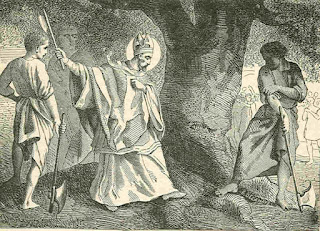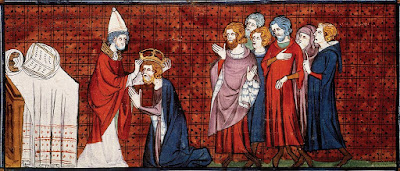Born to Bivin of Gorze, he was the brother of Boso, who married Ermengard and was the father of Louis the Blind. Richard and Boso had a sister, Richilde of Provence, who married Charles the Bald, King of West Francia.
In 875, Richard and his brother went with Charles the Bald when he was to be crowned by Pope John VIII on Christmas Day as Emperor of the Carolingian Empire. Richard was 17; Boso was about 34. Boso was named by the pope Duke and Viceroy of Italy and Duke of Provence.
When Charles died two years later, Boso asked Richard and Hugh the Abbot to manage Italy and Provence while Boso went to France. Two years after that, however, on the death of Charles the Bald's son Louis the Stammerer (King of West Francia), Boso promoted himself King (not Duke) of Provence. Richard did not support his claim, and instead decided to take over Boso's territory of Autun (and then styled himself Count of Autun). Carloman II, son and successor of Louis the Stammerer, confirmed Richard in that position, snubbing Boso.
Richard continued expanding, besieging Boso's capital of Vienne with the support of Carloman and others, including the new emperor Charles the Fat. Richard ultimately drove Boso into exile in 882 and captured Ermengard and his children. Richard called himself Duke of Burgundy (virtually creating the title). Boso never regained power, but his son Louis the Blind did succeed him (with Richard's support).
In 888, Charles the Fat died and Richard supported Duke Rudolph I as King of Upper Burgundy and married Rudolph's sister Adelaide. Of their children, Rudolph became king of Francia, Hugh the Black became Duke of Burgundy; their daughters married counts and dukes.
On his deathbed, supposedly Richard was asked by a bishop if he wanted to ask for absolution for all the bloodshed he had caused, and his response was that he saved good men by eliminating bad men, and felt no remorse whatsoever.
There have been several Charles's mentioned in this blog, with various epithets (Bald, Fat, Good, Simple, Younger), but we haven't given Charles the Fat his own entry yet. Allow me to rectify that tomorrow.









